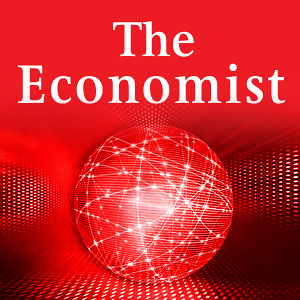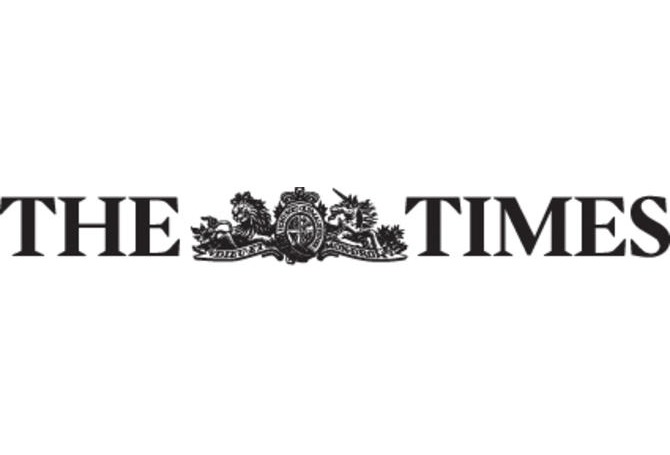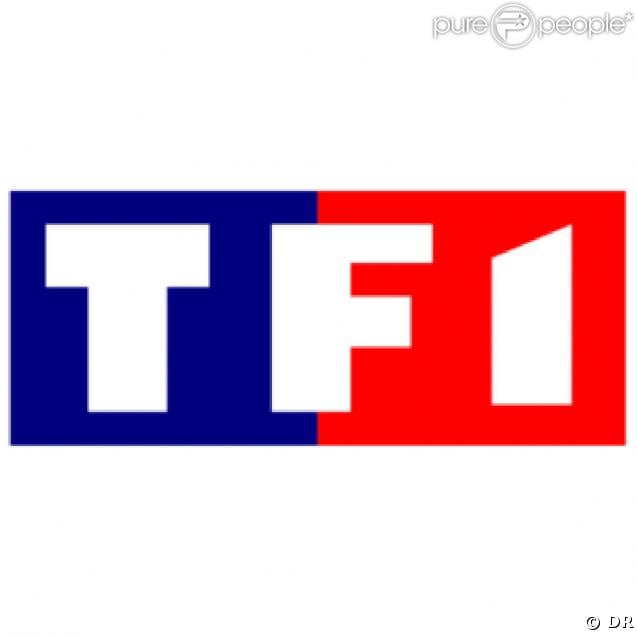|
Cinegy Workflow is an integrated, end-to-end, HD/SD, digital media production and management system designed to meet the challenges of 21st century television and media production. Based on standard PC hardware and IT infrastructure, Cinegy Workflow is a modular, open platform consisting of a suite of tools, applications and open APIs that allow television production to shift into the next gear without being taken hostage by a particular vendor’s proprietary solution. It also integrates fully with traditional production and post production processes, including non-linear editing systems, and can be implemented without requiring investment in a completely new infrastructure. “We have been able to use Cinegy not just as a richly featured production tool, but as a crucial element in our post workflows. As well as moving media into Avid, Cinegy’s handling of different file types for capture and export have helped to fulfill many other integration requirements. In addition, the use of the system for catch-up TV editing has allowed us to benefit even further from our investment.” Paul Drewett (Technology Consultant (Production) – Innovation & Business Change – ITV) KEY FEATURES Flexible and scalable “It is impossible to compare what we had before to what we have now. Cinegy Workflow is completely integrated, the workflow is much better and operationally it is very easy to use. The cost benefits are tremendous.”Hasan Kiragi, Director of Broadcast Operations Dogan TV Cinegy Workflow is an open platform consisting of a suite of software tools, applications & open APIs covering every stage of the digital production process. “PBS has operated a limited DDMS in the past but is modernizing to a more comprehensive service restoration approach,” “Because Cinegy’s architecture is hierarchical and flexible, allowing channels to be added or reconfigured with minimal costs and high operational efficiencies, a full DDMS is now possible.”Jim Cutright, Sr. Project Manager at PBS. |
Monthly Archives: May 2012
Cinegy Workflow – Complete Production and Archive Media Asset Management Solution
Filed under community, convention, creation, cyber, Media, Technology
Activists: Syrian troops shell Houla, site of last week’s civilian massacre
(CNN) — Syrian forces shelled Houla early Thursday, opposition activists said, days after shadowy men went door-to-door in the town, slaughtering families with knives and guns.
The attacks started shortly after United Nations observers left the town, said a local resident whom CNN is not naming for safety reasons.
Government troops fired dozens of mortars and rockets, killing two people, opposition activists said.
An additional young boy was killed by sniper fire, according to the London-based Syrian Observatory for Human Rights.
CNN cannot confirm death tolls or reports of violence from Syria because the government limits access to the country by foreign journalists.
The reported attacks highlight a conflict that has spiraled out of control as the call for President Bashar al-Assad’s ouster that began in March 2011 has devolved into a brutal crackdown against the protesters by the government.
In the massacre in Houla on Friday, most of the more than 100 victims killed were children and women, sparking international outrage that led Western nations to expel Syrian diplomats in a coordinated move against the regime.
The United States, the Netherlands, Australia, Britain, France, Germany, Italy, Japan, Spain, Bulgaria, Turkey and Canada announced that they are expelling Syrian diplomats.
Susan Rice, the U.S. ambassador to the United Nations, said the massacre was carried out by Shabiha militias or local gangs acting on behalf of the regime.
Syria has repeatedly denied involvement. Bashar Jaafari, the nation’s U.N. ambassador, said the government will finish its investigation into the massacre this week.
“And all of us will know for sure the identity of the perpetrators,” he said.
Since the conflict began, the government has blamed the violence against civilians on armed terrorist groups.
Syria, Sarajevo and Srebrencia: When outrage isn’t enough
Alex Thompson, chief correspondent for Channel 4 News, visited Houla and expressed skepticism about the government’s claim.
“The question you have to ask is, ‘How was it 100 armed militia were able to come in and slaughter family after family, in an area which was an intensive shelling zone prior to them arriving, and yet when they came in the area, no shells fell on them?'” he told CNN’s “Anderson Cooper 360” on Wednesday night.
Syrian opposition fighters issued the government a Friday afternoon deadline to cease fire, pull out troops from residential areas and allow humanitarian aid.
The Free Syrian Army, which mainly comprises of military defectors, did not say what will happen if the government fails to comply.
“Our national, moral and humanitarian duty make it necessary for us to defend and protect our civilians and their cities, towns, blood and dignity,” the group said in a statement.
The ultimatum lists a series of demands in a peace plan implemented last month and brokered by United Nations special envoy Kofi Annan.
“Immediately halting gunfire and all violence, pulling out all the troops, tanks and machinery from residential areas, allowing humanitarian aid to reach all stricken areas, releasing all prisoners and allowing media access,” said Col. Qasim Saad Eddine, the group’s spokesman.
Eddine also called for freedom to demonstrate, an end to attacks on U.N. monitors in the nation and a dialogue on power handover.
Despite the Annan peace plan, violence has continued almost daily.
Clashes continue unabated, with regime forces and police shelling a Homs neighborhood Thursday, said the Local Coordination Committees of Syria.
A day earlier, at least 74 people were killed nationwide and 13 bound and shot bodies were discovered in eastern Syria, the head of the U.N. observer mission said.
The United Nations estimates 9,000 people have died since the protests began last year, while activist groups put the death toll at more than 11,000.
Meanwhile, Syrian authorities freed 500 prisoners arrested for their alleged involvement in the 15-month uprising against the government, state TV reported Thursday. No more information was immediately available.
Filed under government, News, Politics
WikiLeaks’ Assange loses sex case appeal but may fight on

London (CNN) — The British Supreme Court denied Julian Assange’s appeal against extradition to Sweden over sexual abuse allegations — but the judges left open a surprise avenue Wednesday for the WikiLeaks founder to fight on.
The court gave his lawyer two weeks to file an appeal arguing that the court had decided the case on the wrong grounds.
The lawyer, Dinah Rose, said she wanted the time to study the ruling and decide whether to appeal. It is very unusual for the court to grant permission to appeal its rulings, which are supposed to be final in Britain.
Assange has been fighting for a year and a half against being sent to Sweden for questioning on sexual abuse accusation.
Two women in Sweden accused Assange in August 2010 of sexually assaulting them during a visit to the country in connection with a WikiLeaks’ release in the summer 2010 of internal U.S. military documents.
WikiLeaks’ work is not at issue in the extradition hearing or the Swedish allegations against Assange.
Assange has not been charged with a crime, but Swedish prosecutors want to question him in connection with allegations of “unlawful coercion and sexual misconduct including rape,” according to a Supreme Court document.
Assange, who has been under house arrest in Britain since December 2010, maintains he is innocent and claims that the allegations are politically motivated. He fears that if he is extradited to Sweden, authorities there could hand him over to the United States, where he then could be prosecuted for his leaking of classified documents.
In a tweet Tuesday, WikiLeaks connected Wednesday’s judgment with the arrival of U.S. Secretary of State Hillary Clinton in Sweden, which is scheduled a few days later.
“Hiliary Clinton and State Dept team arrive Stockhom June 3-4; 4 days after Assange extradition decision. Fanciful to think no discussion,” the tweet read, misspelling both the first name of the cabinet official and of the Swedish capital.
Clinton is due to make a stop in Stockholm, Sweden, according to a statement on the State Department website, on a swing through six countries. Discussions about Internet freedom are included on the agenda.
Assange’s lawyers fought the extradition on appeal via a legal technicality involving the arrest warrant.
They argued that the “European Arrest Warrant” issued for Assange is invalid because it was issued by a Swedish prosecutor, whom they say is not an independent and impartial judicial authority.
His lawyers earlier vowed to take their fight all the way to the European Court of Human Rights if the Supreme Court denies the appeal.
Two women Assange had sexual relations with in Sweden in August 2010 subsequently went to police, who took down their complaints, according the Britain’s Supreme Court. Police then interviewed Assange.
The WikiLeaks founder left Sweden “in ignorance of the fact that a domestic arrest warrant had been issued for him,” according to the U.K. high court. A Swedish court granted a warrant for his “detention for interrogation,” and Swedish prosecutors issued a European Arrest Warrant for his detention in the U.K.
WikiLeaks, which facilitates the anonymous leaking of secret information, has published some 250,000 confidential U.S. diplomatic cables, causing embarrassment to the government and others.
It has also published hundreds of thousands of classified U.S. documents relating to the conflicts in Iraq and Afghanistan.
But the organization has come under financial pressure, leading Assange to announce that WikiLeaks was temporarily stopping publication to “aggressively fundraise” in order to stay afloat.
An announcement at the top of WikiLeaks’ home page reads: “We are forced to put all our efforts into raising funds to ensure our economic survival.”
During his wait for the Supreme Court to rule on his extradition, Assange has hosted a talk show on Russian TV. The Wikileaks founder hosts “The World Tomorrow,” which appears on the Kremlin-funded, pro-Russian network Russia Today, from the Suffolk mansion where he is under house arrest, with an electronic bracelet monitoring his movements.
He has interviewed controversial figures at odds with the U.S. government including Hassan Nasrallah, the leader of Hezbollah, which the United States considers a terrorist organization; and Ecuador’s president Rafael Correa, who railed against the United States in his interview with Assange.
Filed under Google, government, Uncategorized, world
Art Basel – Exhibition Sectors
Nearly 300 of the world’s leading art galleries for Modern and contemporary art display 20th- and 21st-century art works. Visitors to Art Basel’s main hall can discover paintings, drawings, sculpture, installations, prints, photography, video and digital art by more than 2,500 artists. The pieces available range from editioned works by emerging artists to museum-caliber masterpieces by legendary figures in art history.
|
||||||||
| up |
||||||||
| up |
||||||||
| up |
||||||||
|
||||||||
| up |
||||||||
|
||||||||
| up |
||||||||
| up |
||||||||
| up |
||||||||
| up |
||||||||
|
||||||||
| up |
||||||||
|
||||||||
| up |
||||||||
| up |
||||||||
| up |
||||||||
| up |
||||||||
| up |
||||||||
|
||||||||
| up |
||||||||
| up |
||||||||
| up |
||||||||
| up |
||||||||
| up |
||||||||
|
||||||||
| up |
||||||||
| up |
||||||||
| up |
||||||||
|
||||||||
| up |
||||||||
|
Filed under Uncategorized
Talks under way to end Sudan conflict

Negotiators for Sudan and South Sudan have held their first talks since deadly border fighting last month, amid fresh accusations by the South of air attacks by Sudan.
Teams from both sides are in the Ethiopian capital, Addis Ababa, for African Union-led talks which were stalled by heavy clashes last month, the worst fighting since the South won independence last July.
Idriss Mohammed Abdel Qadir from Khartoum and Pagan Amum from Juba began Tuesday’s talks mediated by former South African President Thabo Mbeki, and also attended by the US special envoy on Sudan, Princeton Lyman.
Sudan stressed on Tuesday its “commitment to reach a negotiated settlement to all issues of differences” and promised “its full adherence to peace and stability between the two countries”, it said in a statement released as talks began.
Sudan said it hoped the talks would mark a “new chapter” in relations “away from conflict and warring”.
Security Council warning
The UN Security Council earlier this month ordered both sides to cease fighting and return to talks or face possible sanctions.
However, the talks in Addis Ababa were overshadowed by claims by South Sudan that Sudanese fighter jets bombed border areas in three Southern states – Unity, Western and Northern Bahr el Ghazal – for the fourth straight day.
“Today as we speak they bombed us,” Amum said just hours before the talks started. Nevertheless he said the talks would resume on Wednesday and that he was optimistic they would produce results.
Sudan has denied attacking the South, and the raids could not be confirmed independently.
Sudan has in turn accused the South of alleged cross-border incursions, which it said broke the UN order to halt hostilities.
Sudan, in an apparent peace gesture, reported it had pulled out troops from the contested Abyei region to end a year-long occupation, an area whose ownership is vital for both South Sudan and Sudan.
A UN spokesman confirmed the pullout, which was in line with a UN Security Council demand for both sides to demilitarise the territory.
Uncharted border
Abyei is one of the main disputes between Sudan and South Sudan, which have been fighting each other along their uncharted border.
Sudanese troops stormed the region in May 2011, forcing some 110,000 people to flee southwards, where the majority remains in impoverished camps.
“SAF (Sudanese Armed Forces) deployed out of Abyei area this evening and they gave the military compound there to UN peacekeepers,” according to the Sudanese Media Centre (SMC), which is close to the security apparatus.
Diplomatic sources said the pullout involved about 300 troops.
“We declared yesterday that we’re going to redeploy so we are going to do whatever we declared,” Abdel Qadir, Khartoum’s negotiator, said as talks broke for the night late on Tuesday, refusing to comment on the progress of discussions.
However, Amum rejected Sudan’s reported pullout, claiming “Sudan did not withdraw from Abyei … up to today they are still in Abyei”.
Unresolved issues
Abyei was to have held a referendum in January 2011 on whether it belonged with the north or South, but that ballot was stalled over disagreement on who could vote.
South Sudan broke away from Sudan in July after a 2005 peace deal ended one of Africa’s longest civil wars, which killed about two million people.
But tensions soon flared again over a series of unresolved issues, including the border, the future of disputed territories and oil.
The South separated with about 75 per cent of the former united Sudan’s oil production, but it still depends on the north’s pipeline and Red Sea port to export its crude.
A protracted dispute over fees for use of that infrastructure led South Sudan in January to shut its oil production after accusing the north of theft.
Salva Kiir, South Sudan’s president, said before Tuesday’s talks that “amicable dialogue on the outstanding issues with Khartoum is the only option for peace”.
Washington Post
Filed under Uncategorized
Workers again among the victims as factories collapse in Italy’s latest deadly earthquake

SAN FELICE SUL PANARO, Italy — Workers at the small machinery company had just returned for their first shift following Italy’s powerful and deadly quake earlier this month when another one struck, collapsing the roof.
At least three employees at the factory — two immigrants and an Italian engineer checking the building’s stability — were among those killed Tuesday in the second deadly quake in nine days to strike a region of Italy that hadn’t considered itself particularly quake prone.
By late Tuesday, the death toll stood at 16, with one person missing : a worker at the machinery factory in the small town of San Felice Sul Panaro. Some 350 people also were injured in the 5.8 magnitude quake north of Bologna in Emilia Romagna, one of Italy’s more productive agricultural and industrial regions. Originally government officials had put the death toll at 17, and there was no immediately explanation for the lowered figure.
The injured included a 65-year-old woman who was pulled out alive by rescuers after lying for 12 hours in the rubble of her apartment’s kitchen in Cavezzo, another town hard hit by the quake. Firefighters told Sky TG24 TV that a piece of furniture, which had toppled over, saved her from being crushed by the wreckage. She was taken to a hospital for treatment.
The building had been damaged in the first quake, on May 20, and had been vacant since. The woman had just gone back inside it Tuesday morning to retrieve some clothes when the latest temblor knocked down the building, firefighters said.
Factories, barns and churches fell, dealing a second blow to a region where thousands remained homeless from the May 20 temblor, much stronger in intensity, at 6.0 magnitude.
The two quakes struck one of the most productive regions in Italy at a particularly crucial moment, as the country faces enormous pressure to grow its economy to stave off the continent’s debt crisis. Italy’s economic growth has been stagnant for at least a decade, and the national economy is forecast to contract by 1.2 percent this year.
The area encompassing the cities of Modena, Mantua and Bologna is prized for its super car production, churning out Ferraris, Maseratis and Lamborghinis; its world-famous Parmesan cheese, and less well-known but critical to the economy — its machinery companies.
Like the May 20 quake, many of the dead in Tuesday’s temblor were workers inside huge warehouses, many of them prefabricated, that house factories. Inspectors have been determining which are safe to re-enter, but economic pressure has sped up renewed production — perhaps prematurely.
Seven people were killed in the May 20 quake. In both, the dead were largely and disproportionately workers killed by collapsing factories and warehouses.
Co-workers of Mohamed Azeris, a Moroccan immigrant and father of two who died in the just-reopened factory, claim he was forced back to work as a shift supervisor or faced losing his job. A local union representative had demanded an investigation.
“Another earthquake — unfortunately during the day — that means people were inside working, so I think that an investigation will need to be opened here to check who cleared as safe these companies to understand who’s responsible for this,” Erminio Veronesi told The Associated Press.
Filed under News, Uncategorized, world
CEO: Apple will ‘double down’ on product secrecy
RANCHO PALOS VERDES, Calif. – Tim Cook shares at least one thing in common with the late Steve Jobs, the man he replaced last year as Apple’s CEO: a strong belief in keeping product development to close to the vest. At the D10 conference, where Cook took the stage for his first in-depth public interview since taking the helm, he announced that Apple would “double-down” on (product) secrecy.
Indeed, Cook stayed true to his word during the interview conducted by All Things D’s Walt Mossberg and Kara Swisher— he wouldn’t spill the beans on any of the products Apple might introduce in a couple of weeks at its World Wide Developers Conference (WWDC).
But Cook did weigh in on a number of topics, from what he learned from his predecessor to his thoughts on Apple TV.
And in the very definition of understatement, Cook said of Apple, “we’ve had a few decent quarters.” (Apple reported record quarterly profits in March. Net profit for the quarter rose 94% year over year.)
Here are edited highlights from Cook’s appearance:
On being CEO. “It’s an absolute incredible time to be at Apple. I’m loving every minute of it…Never have I seen the things I can’t talk about today — the juices are flowing and we have some incredible things coming out.” Working at Apple, Cook said, is “my oxygen.”
On the iPad and tablets. “I’ve never seen a product in technology that consumers loved pretty instantly and business loved and education loved and people of all ages loved. I think we’re in the first inning on the iPad. It’s only been two years.
I really believe that the tablet market will eventually surpass the PC market. Everybody at the beginning kind of laughed that off and said no way. Today I think there’s a lot more believers. I would guess there’s a lot of people in this audience that use their iPads a lot more than they use their computers. And I know I do that. And I love the Mac. We didn’t invent the tablet market. We invented the modern tablet. In my view the tablet and the PC are different. Products are about tradeoffs. The more you look at a tablet as a PC the more the baggage of the past affects the product (negatively).
I don’t see the tablet replacing the need for all PCs or all Macs. What I see is the tablet for some people takes over what the PC was about for them.
On the death of Jobs and his impact. “I learned a lot from Steve. It was absolutely the saddest days of my life (when he passed away.)
As some point late last year somebody shook me and said, ‘it’s time to get on.’ That sadness was replaced by this intense determination to continue the journey. I learned that focus is the key not just in running a company but in your personal life as well. He also taught me that the joy is in the journey. And he taught all of us that life is fragile.
Another thing that Steve taught us was not to focus on the past. Steve told me when he called me to his home to talk about being CEO…he told me (he) witnessed what happened at Disney when Walt passed away. He said people would go to meetings and all sit around and talk about what Walt would have done. And he looked at me with those intense eyes and he told me to never do that, to never ask what he would do — just do what’s right.”
Steve was a genius and a visionary. I never really viewed my role was to replace him. He was irreplaceable. Steve was an original and I don’t think there’s another one of those being made. I never felt the weight of trying to be Steve. I am who I am…and focused on being a great CEO at Apple.
If (Steve) were sitting here he would tell you that one person can’t do it all. You could have an “S” on your chest and a cape on your back and not be able to do everything. He brought in great people and set a standard. His legacy was in leaving that foundation.
Patent wars among Apple, Samsung, Google: Is it a problem for innovation? “It’s a pain in the ass. We can’t take all of our energy, all of our care, and finish the painting and have someone else’s name on it. We can’t have that. The worst thing in the world that can happen to you if you’re an engineer and you’ve given your life to something is for someone to rip it off and put their name on it. ”
The TV business. It’s not a fifth leg of the stool. It’s not the same market size as the phone business or the Mac business or the music business or the tablet business. But last year we sold 2.8 million Apple TVs. This year just in the first six months we sold 2.7 million. This is an area of intense interest for us. And so we’re going to keep pulling this string and see where it takes us. I think many people would say this is an area in their life they’re not really pleased with. It’s an interesting area.
Right now our contribution is Apple TV.
(When asked about whether Apple is making a TV set.) “You were right, I’m not going to tell you.”
“We would look not just at this (TV) area but other areas (and) we would ask can we control the key technology? Can we make a significant contribution far beyond what others have done in this area? Can we make a product that we all want? We think we’re reasonably good proxies for others. Those are things we would ask about any new product category.”
Among other subjects Cook touched on: he said he didn’t think Apple has to own a content business. He said Apple didn’t look at buying Instagram before Facebook’s acquisition. And while he wouldn’t rule anything out, Cook says he is not looking at any big acquisitions right now.
Cook said Apple has to be social but doesn’t have to own a social network. Twitter is deeply integrated into its iOS mobile operating system and OS X Mountain Lion, the newer version of the Mac software that is coming this summer.
He named Bobby Kennedy and Martin Luthor King as two of his heroes, and said Disney’s Bob Iger, who sits on Apple’s board, is one of the CEOs that he admires.
And he recalled the time in 1998 when Jobs tried to woo him to Apple from Compaq, he had no intention of joining. Cook fielded a number of calls from recruiters and finally agreed to meet with Jobs. He flew out on the redeye on a Friday night for a meeting the next morning. “The honest to God truth is that five minutes into the conversation I wanted to join Apple…He painted a story, a strategy that he was taking Apple deep into consumer at a time that I knew that other people were doing the exact opposite. I never thought following the herd was a good strategy. You’re destined to be average at best. I saw brilliance in that.”
Cook resigned from Compaq immediately.
usatoday.com
Filed under Science, Technology
Home and dry – Europe’s weaker economies are in the grip of a worsening credit crunch

THE joke recounted by the boss of a large Italian bank is an old one, but it captures the moment. Two hikers are picnicking when a bear appears. When one laces up his boots to run, his friend scoffs that he can’t outrun a bear. The shod hiker retorts that it is not the bear he needs to outrun, merely his fellow hiker. “We’re sitting at the picnic with our boots still on,” says the bank boss.
As policymakers and pundits try to work out the effects of a Greek exit, banks and investors have already been taking precautions. One course of action has been to pull money out of more fragile markets. Never mind the weakest economies like Greece, Ireland and Portugal; Spain and Italy have also lost foreign bank deposits of about €45 billion ($56 billion) and €100 billion respectively from their peaks. Add in things like sales of government bonds by foreigners (see chart 1), and capital flight is probably equal to about 10% of GDP in those countries, say Citigroup analysts. Such outflows are hard to stop.
The European Central Bank (ECB) has filled this funding gap by providing liquidity to the banks. But that has in turn reinforced the second precautionary tactic: matching assets and liabilities within countries as much as possible. It is a common refrain from bankers that the euro area no longer functions as a single financial market, although that has the paradoxical advantage of making a break-up less destructive. Banks have used ECB loans to borrow from the national central banks of the countries in which they have assets; that should mean that both sides of the balance-sheet would get redenominated in the event of a euro exit.
Much of that ECB liquidity is meant to find its way into the real economy, of course. But the third precautionary technique, for both lenders and borrowers, is to hang fire while uncertainty is so high. The Economist has compiled a credit-crunch index, comprising a number of measures on everything from bank lending to the cost of buying insurance against default for banks, firms and sovereigns in the euro zone. A single index disguises big differences between weaker and stronger states, but it shows that credit is crunchier now than it was at the height of the banking crisis in 2008 (see chart 2).
Much economic activity is being strangled as a result. In Spain firms have put bond issues and asset sales on hold. Volatility makes it almost impossible to value an asset, bankers say. The Catalan government failed to sell 26 buildings in Barcelona earlier this year for about €450m because one of the bidders wanted to introduce a clause that said rents would be paid in dollars in the event of a euro break-up; the other bidder pulled out because it had been told by headquarters to hold off on deals in southern Europe.
The number of Spanish companies filing for bankruptcy climbed by 21.5% in the first quarter. Nearly a third of these were in the property or construction industries, but the rot is spreading. Alestis, an aeronautical supplier to aircraft manufacturers, filed for bankruptcy earlier this month after failing to reach an agreement with banks to refinance its debts.
The sound of credit crunching can also be heard next door in Portugal, where loans to non-financial companies fell by 5% in the first quarter compared with the same period last year, and credit to households by 3.6%. One of the conditions of the country’s bail-out programme is that banks should reduce their total loans to 120% of assets. The quickest way to do that is to avoid making loans.
Conditions are little better in Italy. The province of Varese, near Milan, is a manufacturing heartland: its factories make plastics, textiles and a range of engineering products. Once firms there griped about poor infrastructure and red tape; now the credit squeeze is their main complaint. The local bosses’ association says that 40% of firms were hit by lowered borrowing ceilings between January and March, and 15% were told to pay back loans. Banks turned down 45% of requests for new funding.
Those loans that are extended carry hefty interest rates, in part because higher sovereign-borrowing costs have a knock-on effect on banks’ funding costs. Differences in sovereign rates can be self-reinforcing, especially when German firms across the border are rivals. “A marginal northern Italian company competing against an equal company in Bavaria will go bust,” says the boss of one bank. “Then the cost of risk goes up and has to be shared by all the other small companies.”
If firms cannot borrow from banks they lengthen payment terms to their suppliers, exacerbating the credit problem, says Michele Tronconi of Sistema Moda Italia, a body representing textiles and clothing firms. Fashion is Italy’s second-largest export industry, but no sector has a higher level of non-performing loans.
This credit squeeze will have tightened since Greece’s inconclusive election this month. That further dents growth prospects: estimates by Now-Casting, a forecasting firm, suggests that euro-zone GDP will contract by 0.2% in the second quarter. That in turn risks worsening the debt dynamics of the zone’s peripheral countries at just the wrong time. Policymakers keep trying to buy time to solve the crisis, but they may be only speeding the end they are trying to avoid.
economist.com
French Competition Authority to market test Canalsat-TPS merger
The investigation services of the French Competition Authority have begun a market test to gain stakeholder views on possible solutions that could address the effects of the TPS-Canalsat merger.
The market test will focus on whether any anti-competitive effects have resulted from the merger and will include some measures that were suggested by market players. It will, says the Authority, provide, in a transparent way, “the opportunity for interested stakeholders to share their analysis on remedies that could be deemed necessary at the end of the procedure.”
Interested stakeholders can submit their comments by Wednesday 6 June 2012.
Following the 2007 merger and acquisition by Canal+ group of TPS activities, 59 commitments had been implemented by the parties. On 20 September 2011, the Competition Authority established that 10 of these commitments were breached by the parties and decided to withdraw its decision to authorise the merger.
As a consequence, on 24 October 2011 the Vivendi and Canal Plus groups, which simultaneously filed an appeal against the Authority’s withdrawal decision before French Administrative Supreme Court, Conseil d’Etat, changed the terms of their acquisition of sole control of TPS and CanalSatellite. The application was then completed by the parties at the request of the investigation services. On 28 March 2012, an in-depth examination of the merger was opened.
TeliaSonera touts 4G progress and OTT alternatives
LIVE FROM OPEN MOBILE SUMMIT LONDON 2012: TeliaSonera has built out its 4G LTE network to cover two out of three of the Swedish population and three in four in Denmark, the Nordic operator’s mobility head, Hakan Dahlstrom, told delegates at the Open Mobile Summit in London this morning.
The company was the first in Europe to launch commercial 4G services at the end of 2009 and now claims to have increased sales and margins as a result – while keeping capex at below 10 percent of net sales in Sweden.
Dahlstrom said it had 140,000 4G users in Sweden but declined to give data for TeliaSonera’s other markets. “The number of [4G] customers is growing in line with [network] expansion,” he said.
The operator’s first 4G handset and 4G router were launched in Q1 2012.
Dahlstrom said the average smartphone user in the Nordics is consuming 300MB of data per month and that this is set to increase to 3GB per month in “just a few years.” Mobile broadband users are on track to consume 45GB per month within five years, he added.
Dahlstrom was broadly in favour of the so-called OTT services using its network but said that TeliaSonera was in a position to offer alternatives.
“The OTT players are increasing the value of the access we are providing to the end user [and] our role is to support this behaviour,” he said. “Access is separate from services. We will treat [the OTT players] like our own services but we will provide alternatives.”
To this end, he said that TeliaSonera was planning an RCS-based communicator to compete with the likes of WhatsApp and Skype. “Not everyone needs to go with our communicator but our customers are asking for this.”
Filed under Uncategorized
































